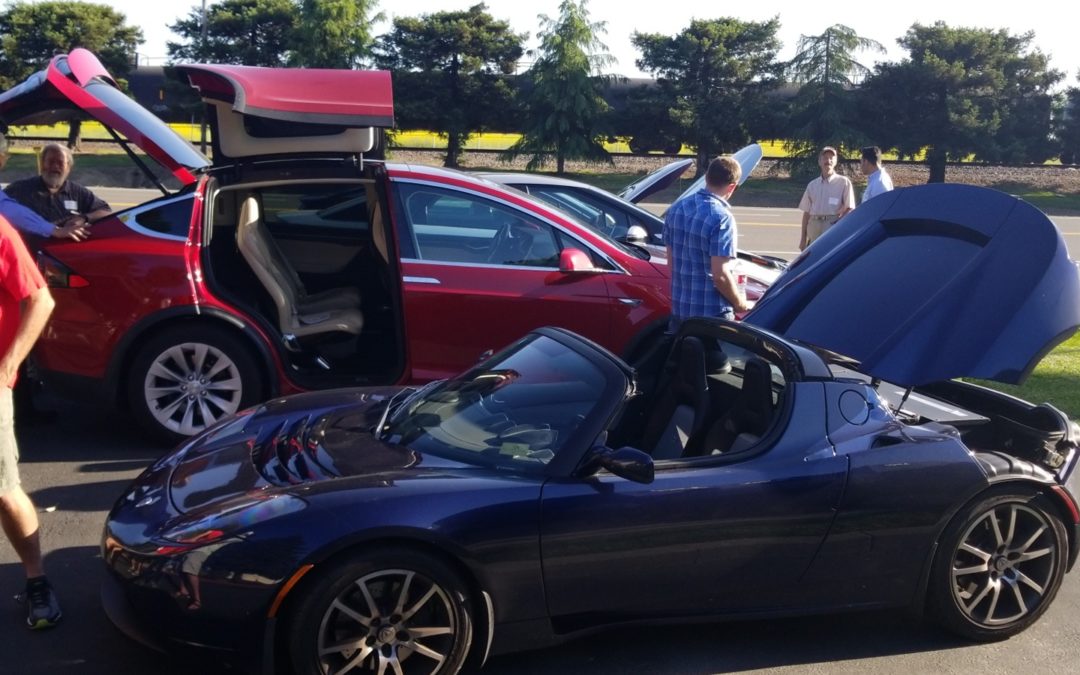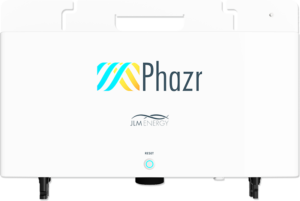
Mobility MeetUp Draws a Big Crowd and Cool Cars
Last Thursday’s MeetUp was our most popular so far. Clearly talking about electric vehicles and new car technology is a hot topic. The event was made all the better by the display of 8 electric vehicles in the parking lot. The crowd got to see the new Honda Clarity and Toyota Mirai fuel cell cars, plus the newest, longer-range (150-mile) Nissan Leaf, a Tesla Model X (very comfy), a Bolt, Tesla Roadsters, and others. There were three presentations. Chris White of the California Fuel Cell Partnership (now a part of Frontier Energy) gave an update on where things are on fuel cell vehicle sales (almost 4500 in total) and hydrogen refueling station installations (just added number 35).
KC Marrs talked about his passion to build affordable electric motorcycles and brought one to show. His designs are elegantly simple. He has built several one-offs for enthusiasts as he experiments with features for one to put into production. His key insight was making sure the bike is Vehicle-to-Grid compatible. He noted that since most bikes are parked at home most of the time, used mostly on weekends, the battery pack is available to extend the use of power from solar panels on the home or to avoid peak power charges from the utility. Clever.
The most fascinating talk was by Marc Lurie of SmartPedal. He has a device which snaps into the sensor on any pedal-by-wire system. These are used mostly on all-electric vehicles, but apparently are increasing in use for hybrids, gas and diesel cars (did not know that). These are replacing the conventional cable systems linking the pedal to the engine. His insight was that people are unintentionally making small adjustments on pedal position as they drive and these are eroding efficiency. He had data showing a 4-8% gain in miles per kWh with his little device. But the best parts of his talk were about the lessons he learned in designing, manufacturing, and selling. These war stories were great and we likely will invite him back to talk more about those. He had good reasons why one should avoid outsourcing too soon, why one should keep control of most of the product designs in the early stage rather than depending on “experts”, and the huge difference between “industrial”-grade and “automotive”-grade designs. These were all lessons that could be applied broadly to those trying to bring a manufactured product to market.
These events are attracting larger and larger crowds. In surveys, attendees say these are the best things going in clean tech in the area. It’s like a graduate education in launching businesses. Our next one is on May 24 and will focus on water–reducing waste, improving quality, and using it wisely. Don’t miss it.

ABOUT THE AUTHOR
Gary Simon is the Chair of CleanStarts Board. A seasoned energy executive and entrepreneur with 45 years of experience in business, government, and non-profits.






